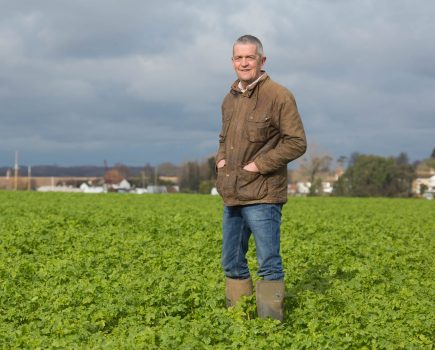By Martin Lines
Is the fog starting to clear, and are the details of future farm policy becoming clearer?
Defra is finally announcing more details on ELMs, including what the Sustainable Farming Incentive will offer for the next few years. This announcement should help us understand the value of our landscape management and how the various options can fit within our business and farming operations.
Farmers have been managing the landscape for generations, yet we see little recognition of this value in the returns for our produce. Payments for environmental land management allow farmers to be fairly rewarded for improved delivery and maintenance of farm habitats. This is a fair deal for restoring and protecting the ecosystems that underpin our businesses.
I speak with many farmers across the country who are already finding that focusing on soil health and biodiversity brings financial benefits. Should Defra get the packages within ELMs right, it should adequately compensate many more farmers for the value of public goods delivered through environmental outcomes which simultaneously support profitable farming.
There is a growing number of supply chain trials and end-users focusing on the nature and carbon footprint of their food. Many companies are committing to buy some or all of their produce from regenerative farms in the coming years. There’s much to welcome within these developments, and as signalled by the wider industry – including public and private sectors – it seems this will be the direction of the marketplace.
Similarly, within the conservative and environmental NGO sectors, support for the marketing of nature-friendly farming is coming to the fore. But how the supply chain measures regenerative agriculture will need to be standardised, so there is greater transparency and an equal playing field. I watch this space with hopeful curiosity.
I’ve entered several trials to measure our farm’s carbon footprint, including the carbon content of our soils and the biodiversity above and below ground. Given the variety of different yet similar tests, I’m interested in the outcomes and which tests will give the best results. Many major brands and key actors within the supply chains will expect farms to demonstrate their products’ carbon footprint. Much like the need for a common framework within the marketplace that measures and monitors farming systems, we need clear frameworks for understanding and communicating our carbon footprint, including benchmarks for demonstrating the opportunities for storing and sequestering carbon across farm landscapes.
As carbon calculating within the marketplace becomes more mainstream, bringing more companies wanting to promote their carbon footprint within the supply chain, I remain cautious about selling carbon to those wishing to offset their own. What we know about the carbon credits market is relatively little, and we need regulation to make this industry equitable. Carbon capture can be sold only once, putting farmers at a disadvantage if they have sold the carbon credits they rely on to distinguish their produce as climate-friendly in the marketplace.
Farming’s data and data collection is evolving to be a significant component of the sector’s future. Our ability to measure and record the impacts of our systems, thus validating our claims to be regenerative and nature-friendly, should drive genuine outcomes. It should make greenwashing more difficult and, ultimately, align the government’s farming incentive schemes with the ethics of the wider supply chain.
We’re still waiting for the government to announce a coherent framework for what and how the industry will measure environmental delivery. Without this, we will end up with a fractured metrics system with many organisations measuring differently. This will impede a farmer’s ability to move between supply chains as the specifics of a single data collection will limit them.
These past few months, I‘ve spoken with farming organisations in different countries, looking at how to record and benchmark our supply chains’ nature and climate footprint. In the near future, large organisations will be required to publicly declare their climate and nature impacts, with many signing up for Nature Positive commitments. But for global trading to work, we will need a standardisation that establishes a common language around holistic farm-level sustainability. Otherwise, the results of many farms achieving genuine nature recovery, climate adaptation and soil restoration won’t be worth the paper on which they’re written.
If the agriculture industry is to meet the NFU’s target of net zero by 2040, it needs to act now and start changing rapidly. May 2023 be the year we collectively work out the what and how of measuring the positive impacts of our farm businesses, through data collection that will give us an accurate benchmark to show improvements. Only through seeing tangible evidence of what our farming systems achieve can we truly understand – and prove – how nature-friendly farming makes better sense in an ever-changing climate.
This article was taken from the latest issue of CPM. For more articles like this, subscribe here.




